New Public Library of Jalisco
render-3
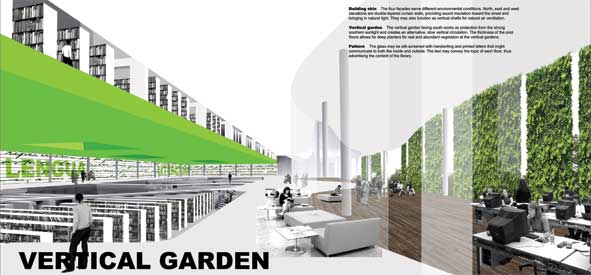
render-2
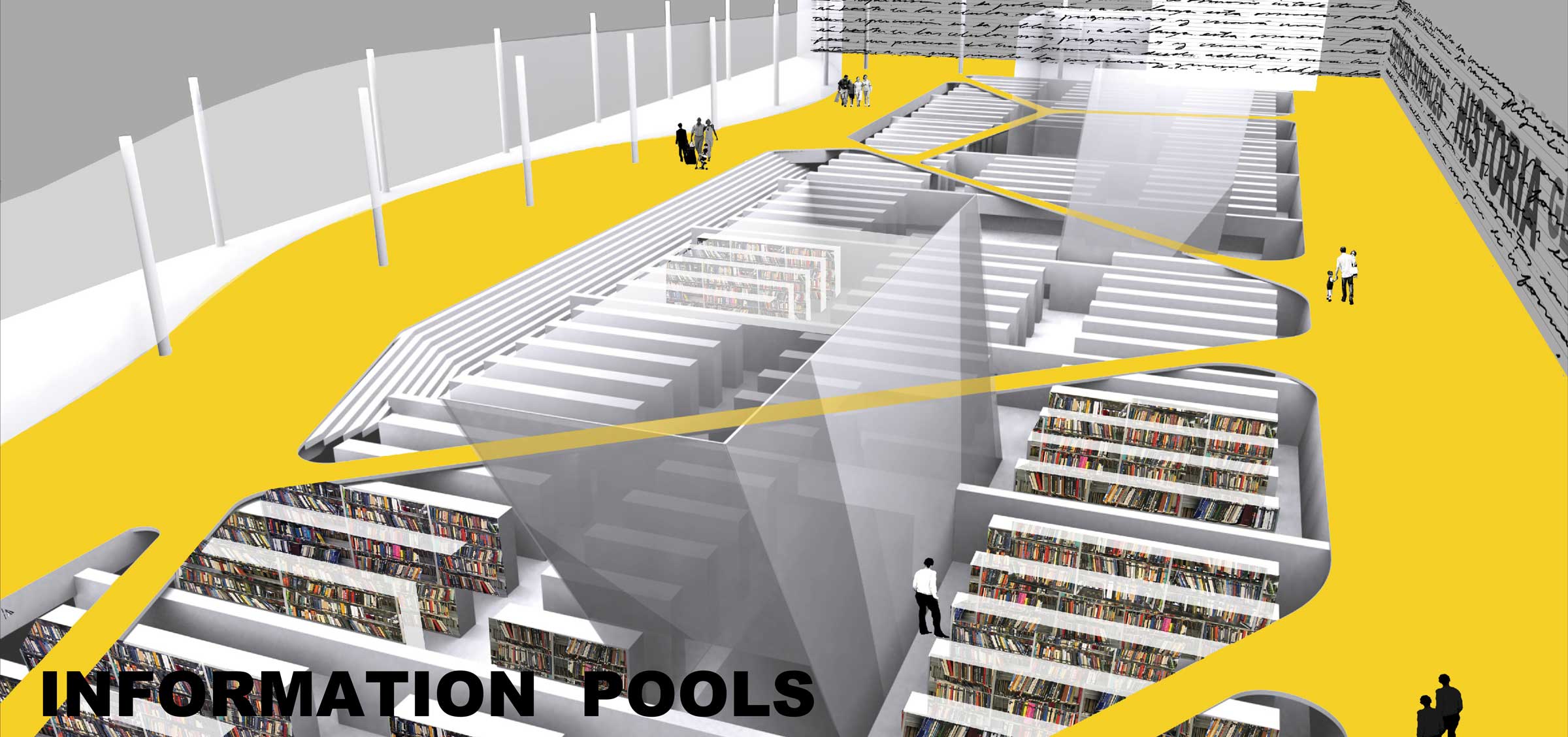
render-1
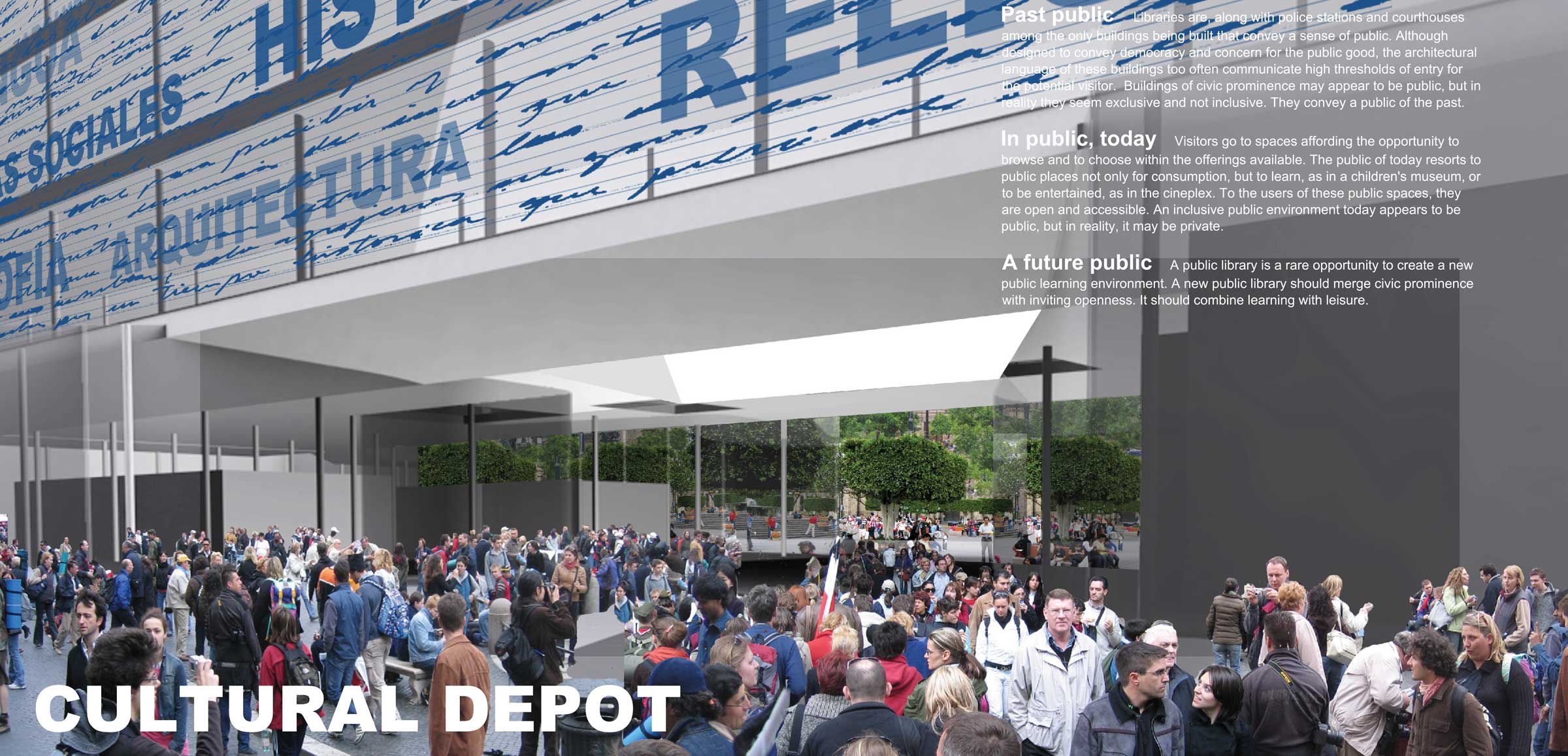
planta-tipo
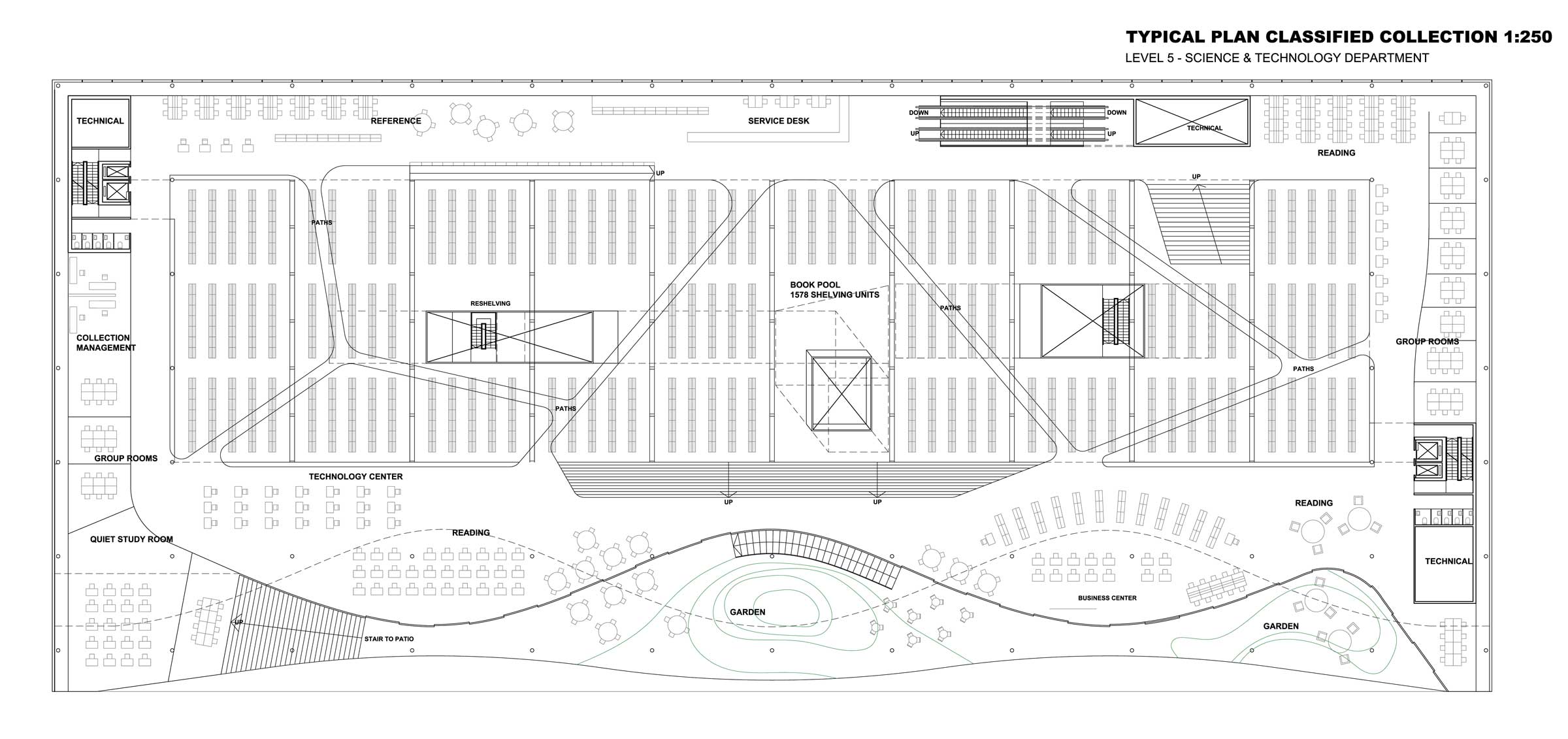
fachadas-b
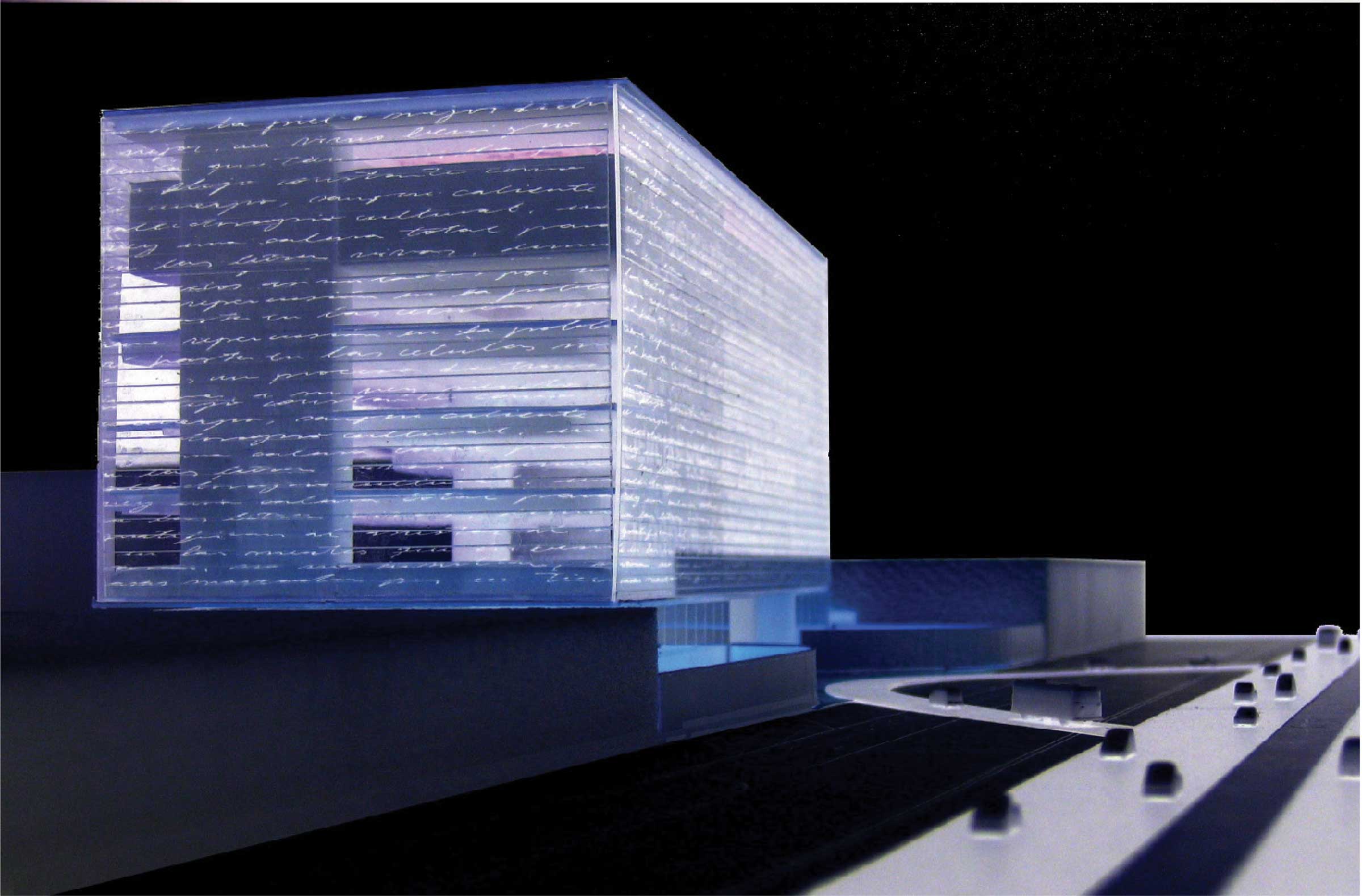
fotos-maqueta-1a
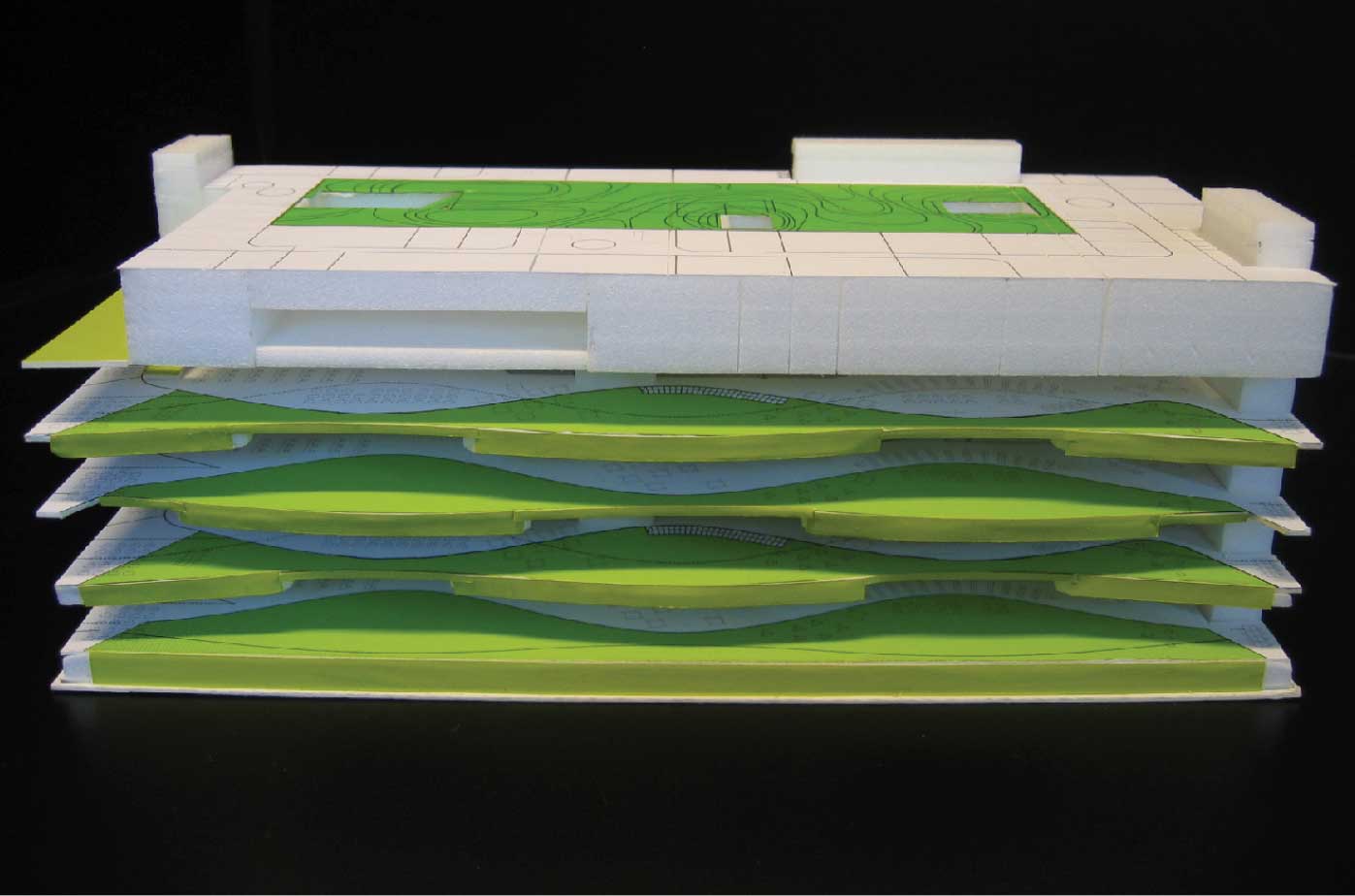
fotos-maqueta-2
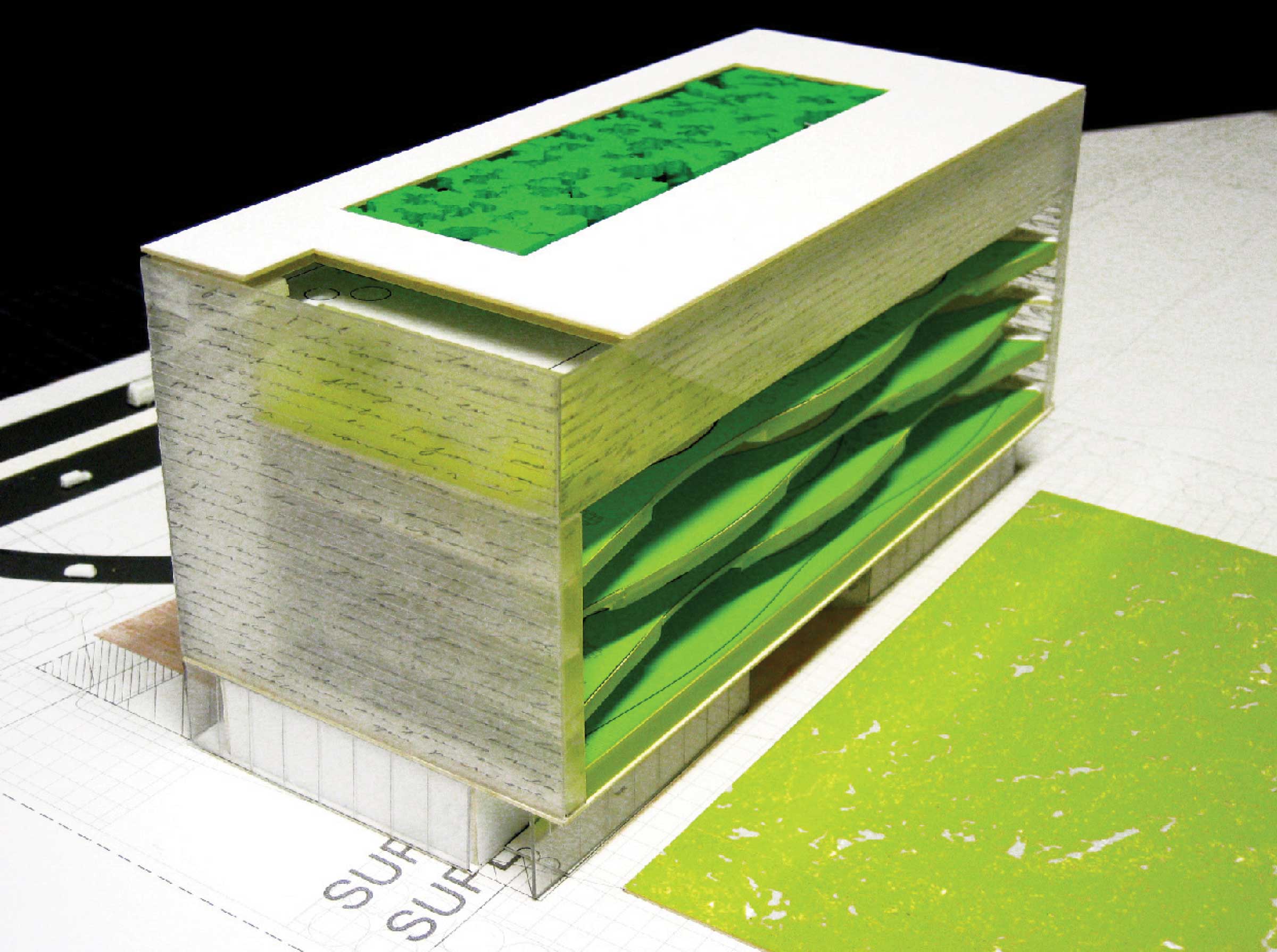
fotos-maqueta-1b
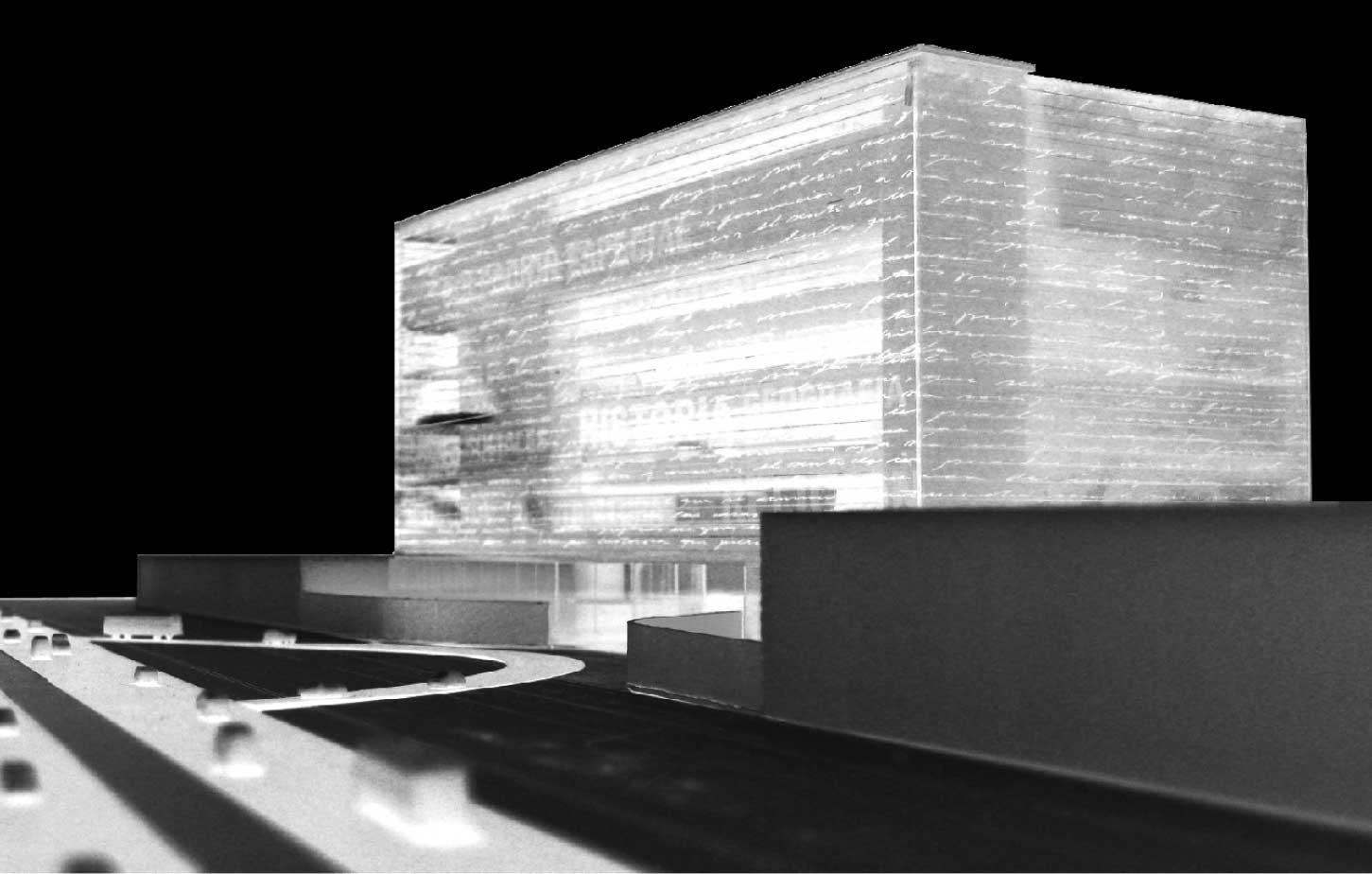
fotos-maqueta1
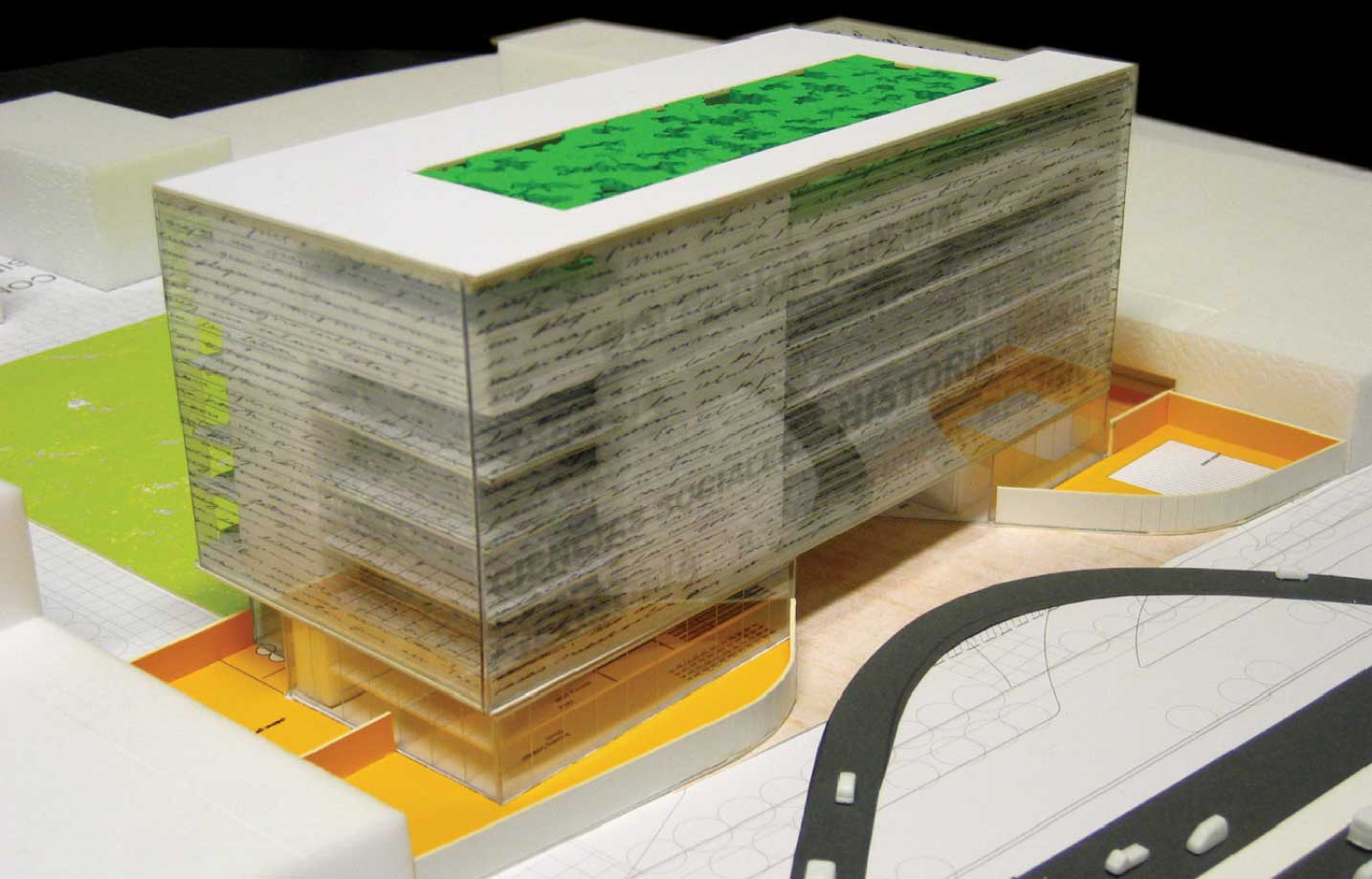
jardin-vertical
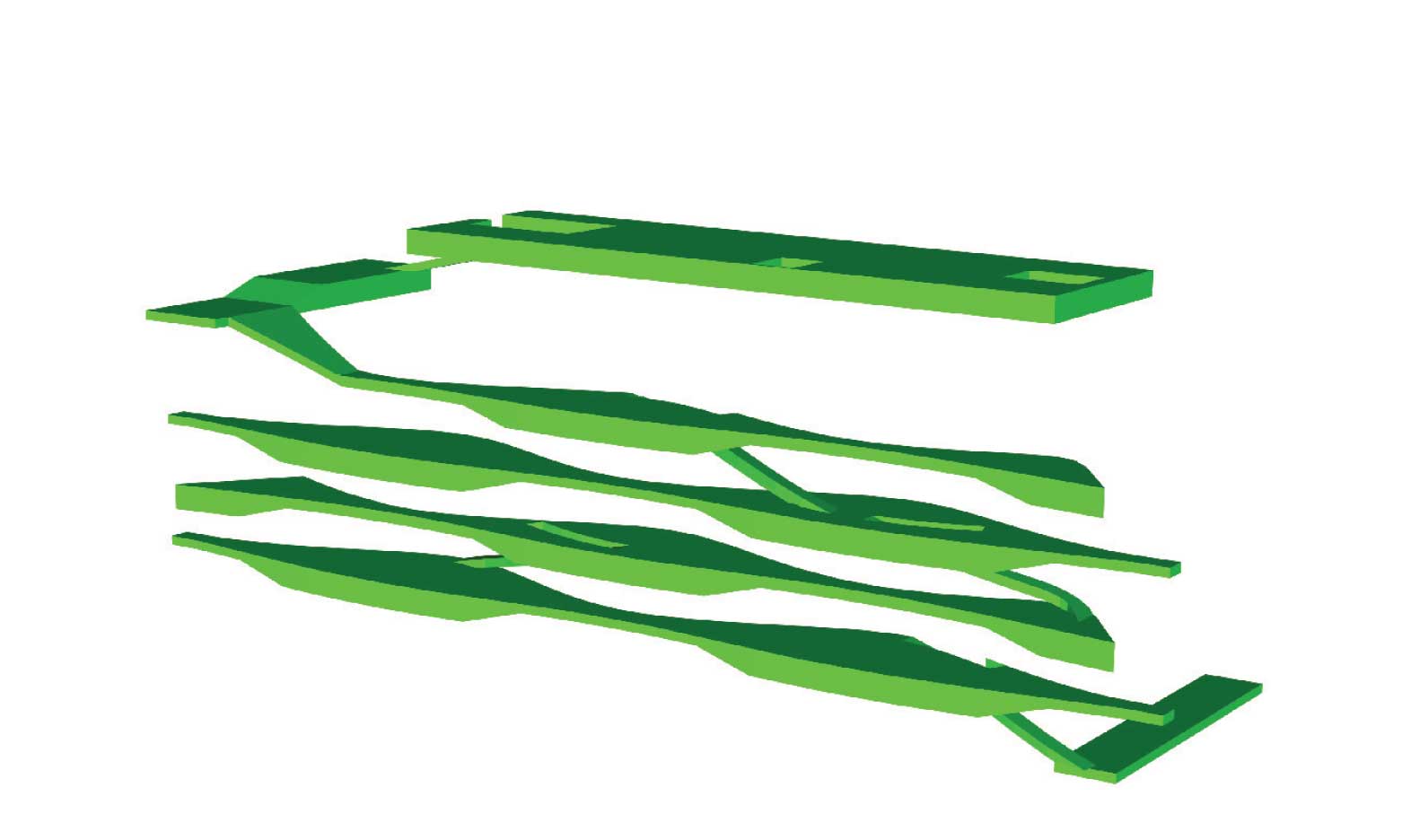
fotos-maqueta2
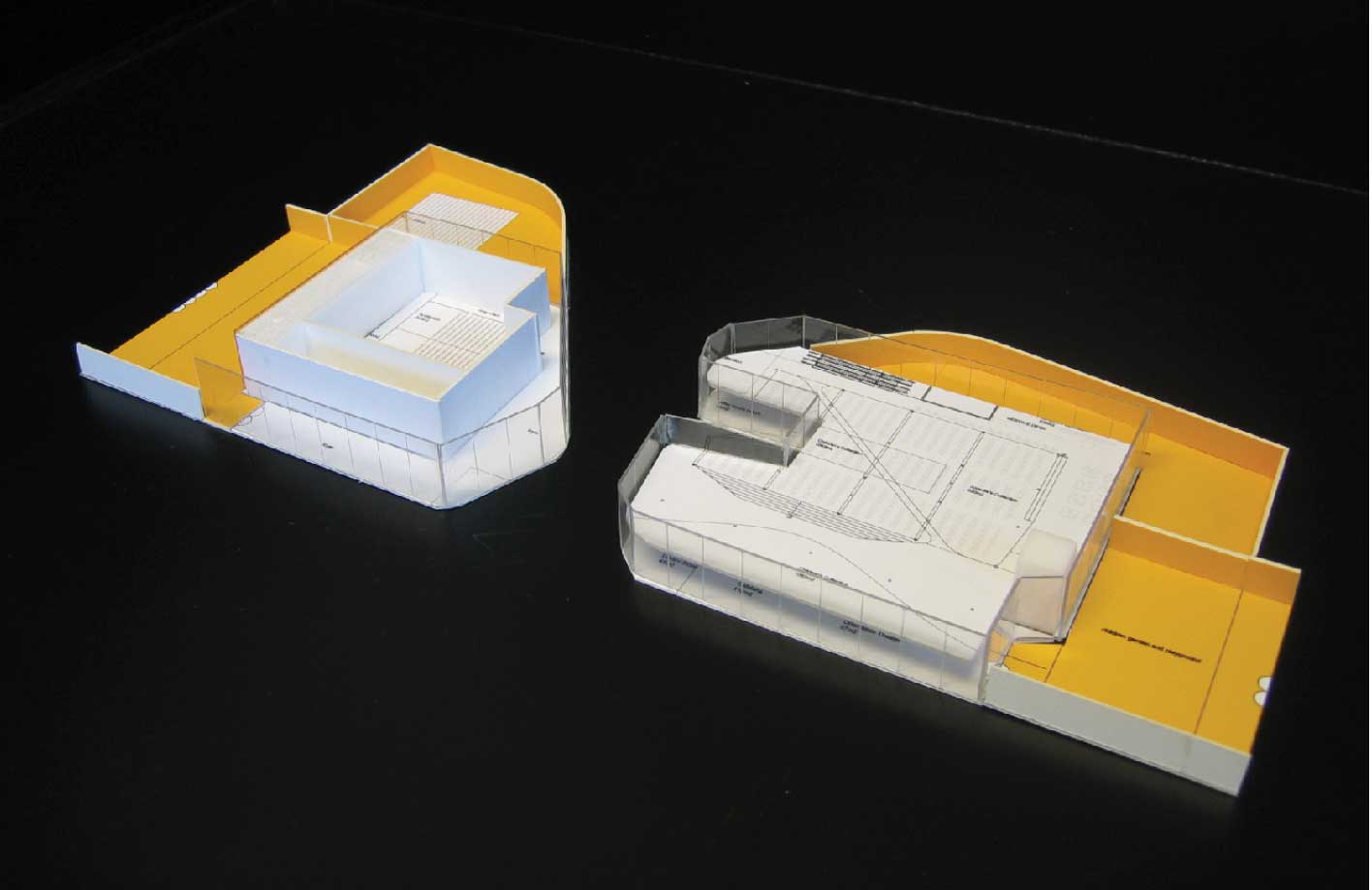
fachadas-a
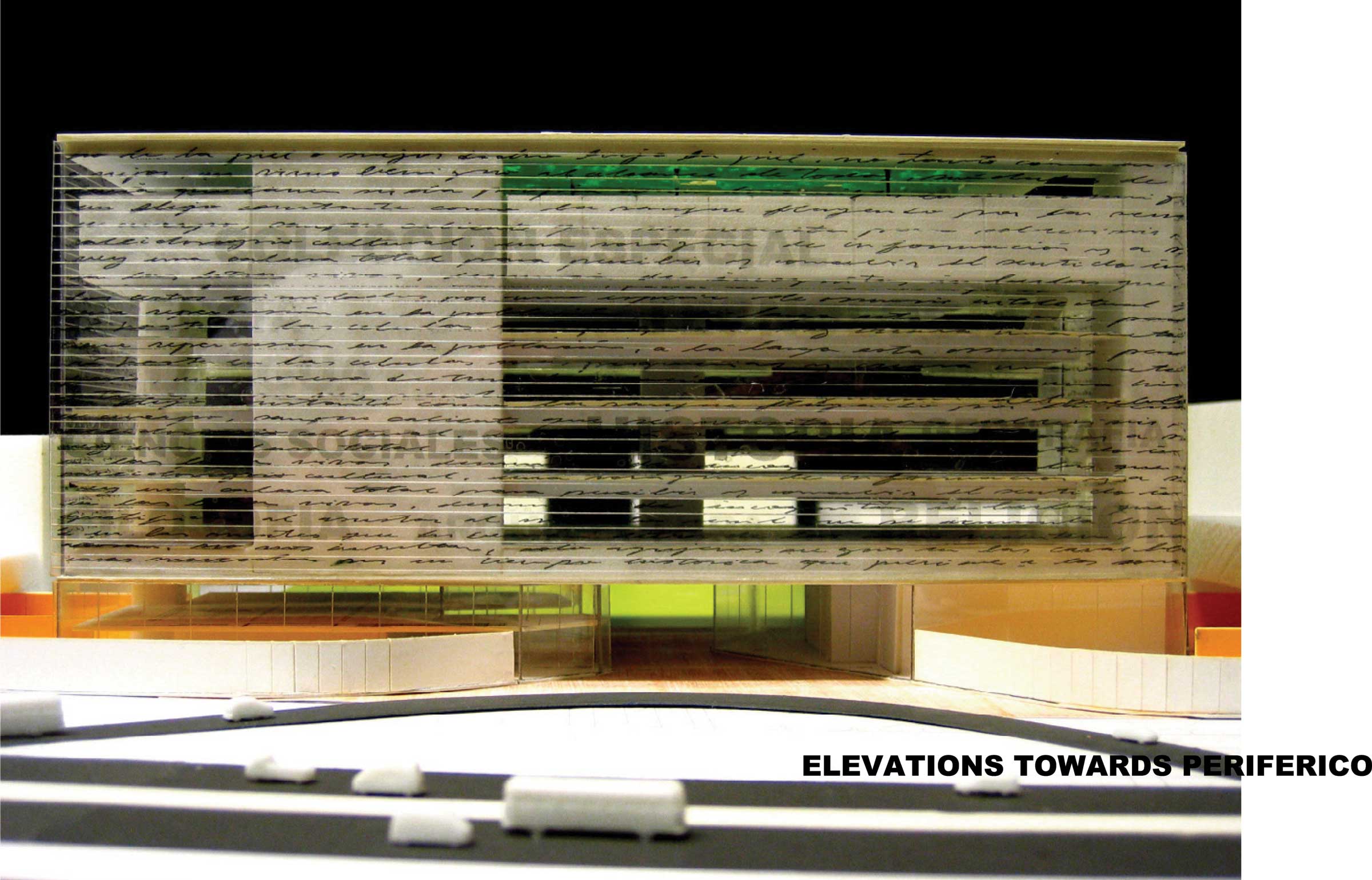
corte
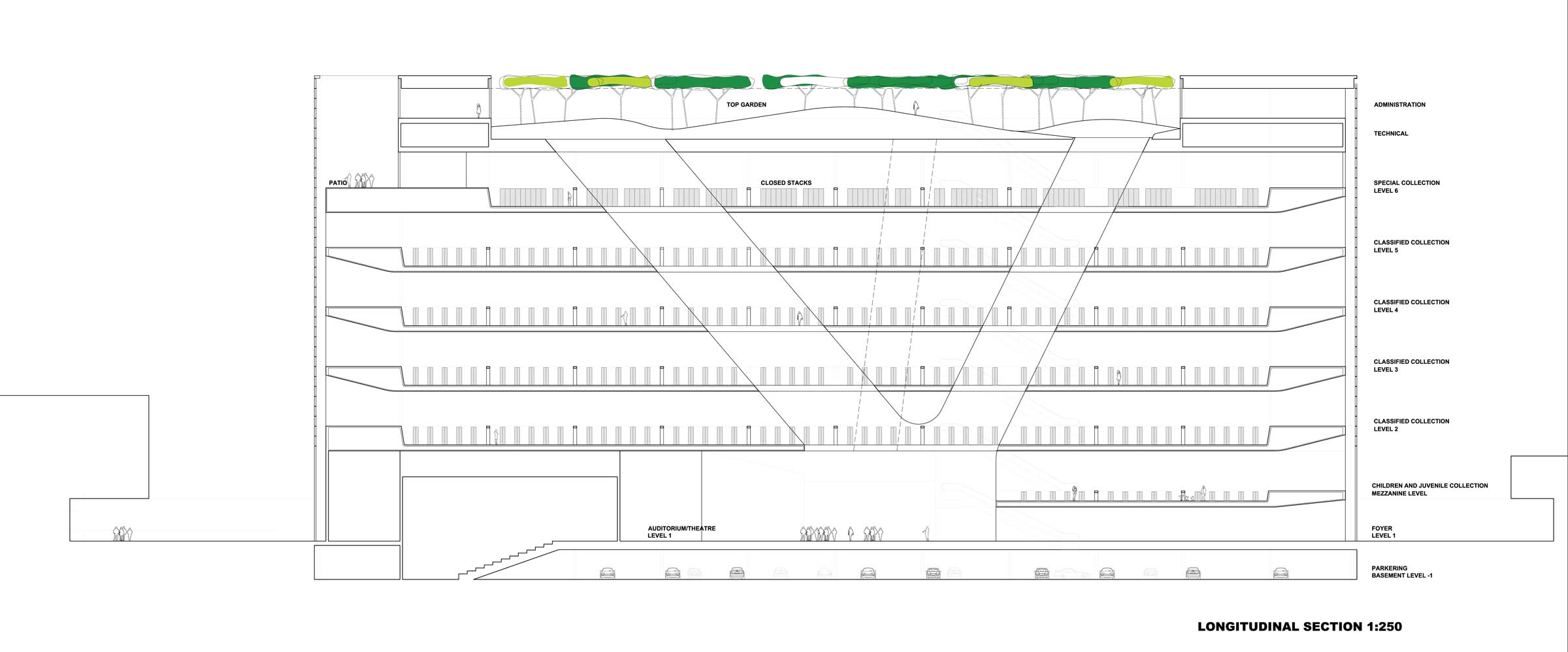
corte-trans
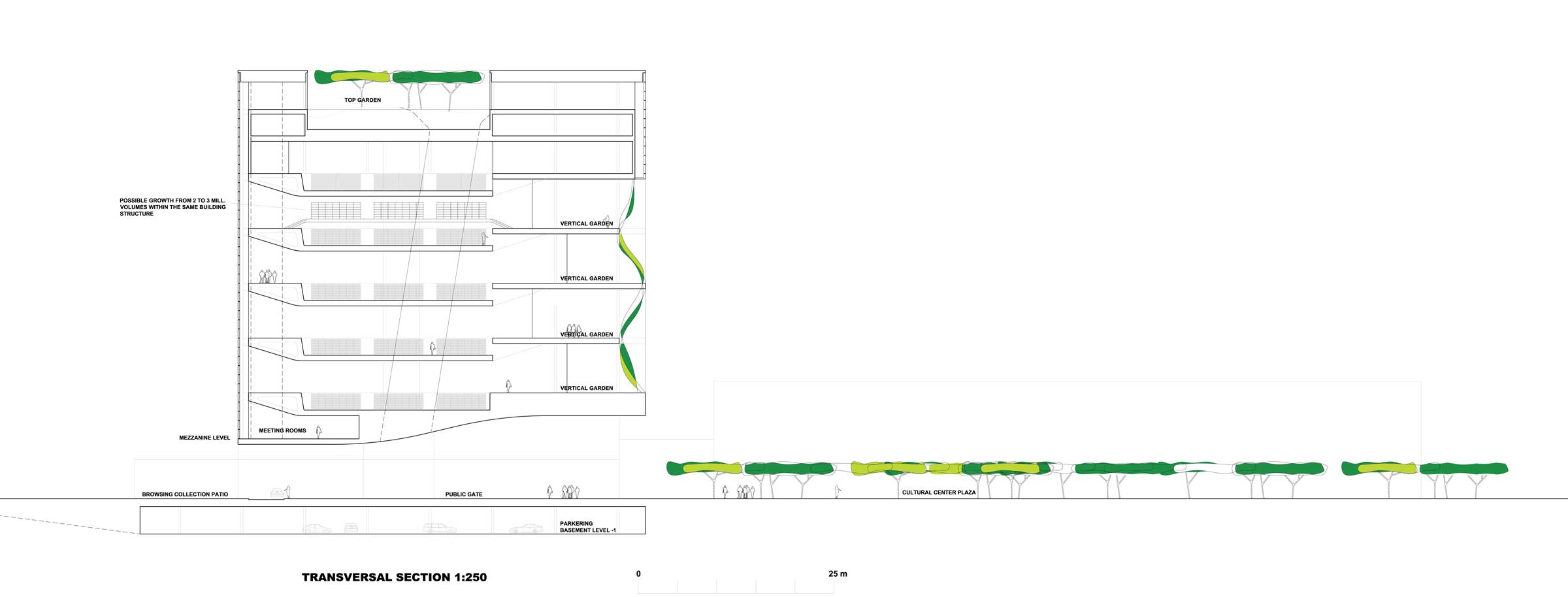
planta-baja
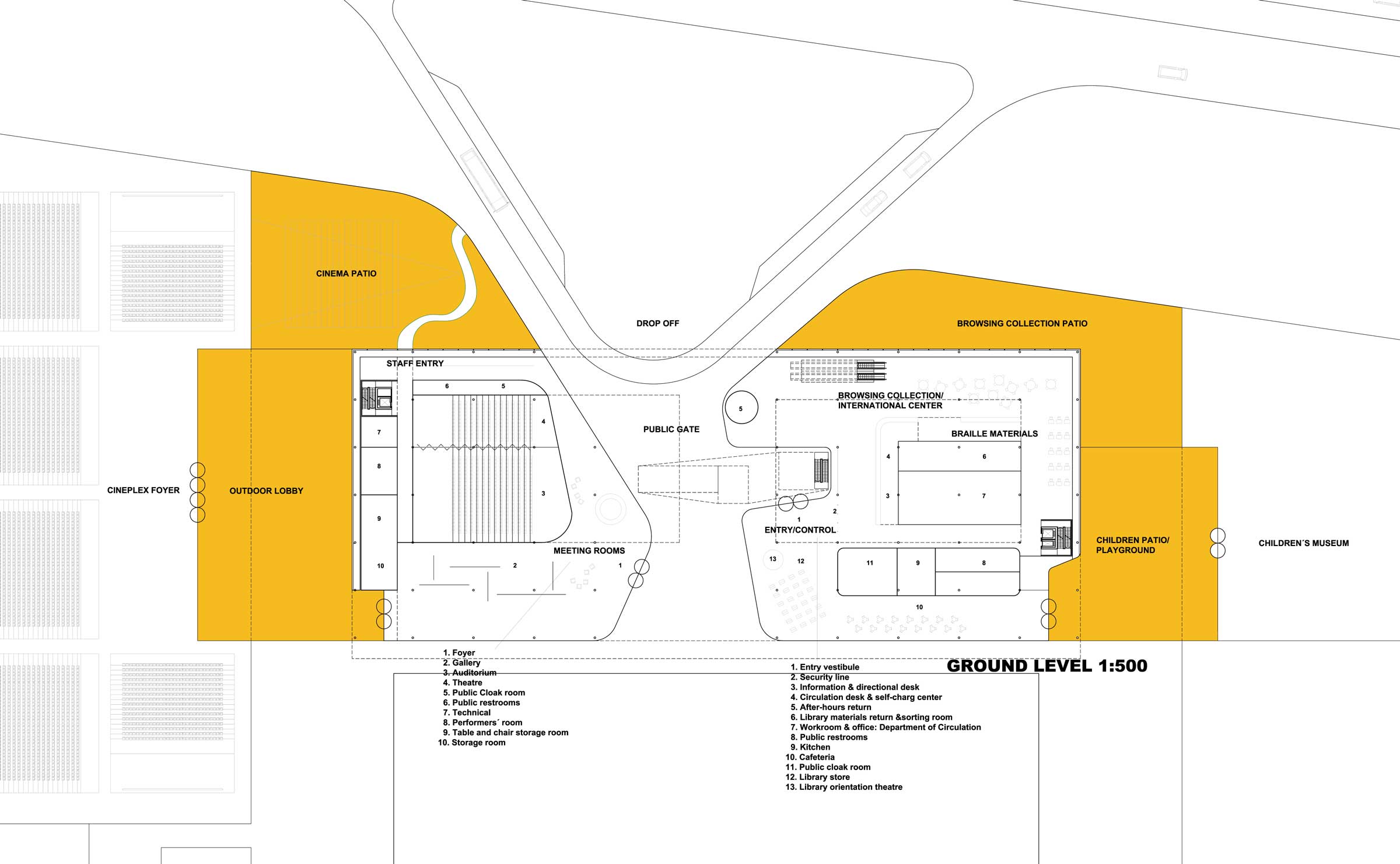
nivel-7
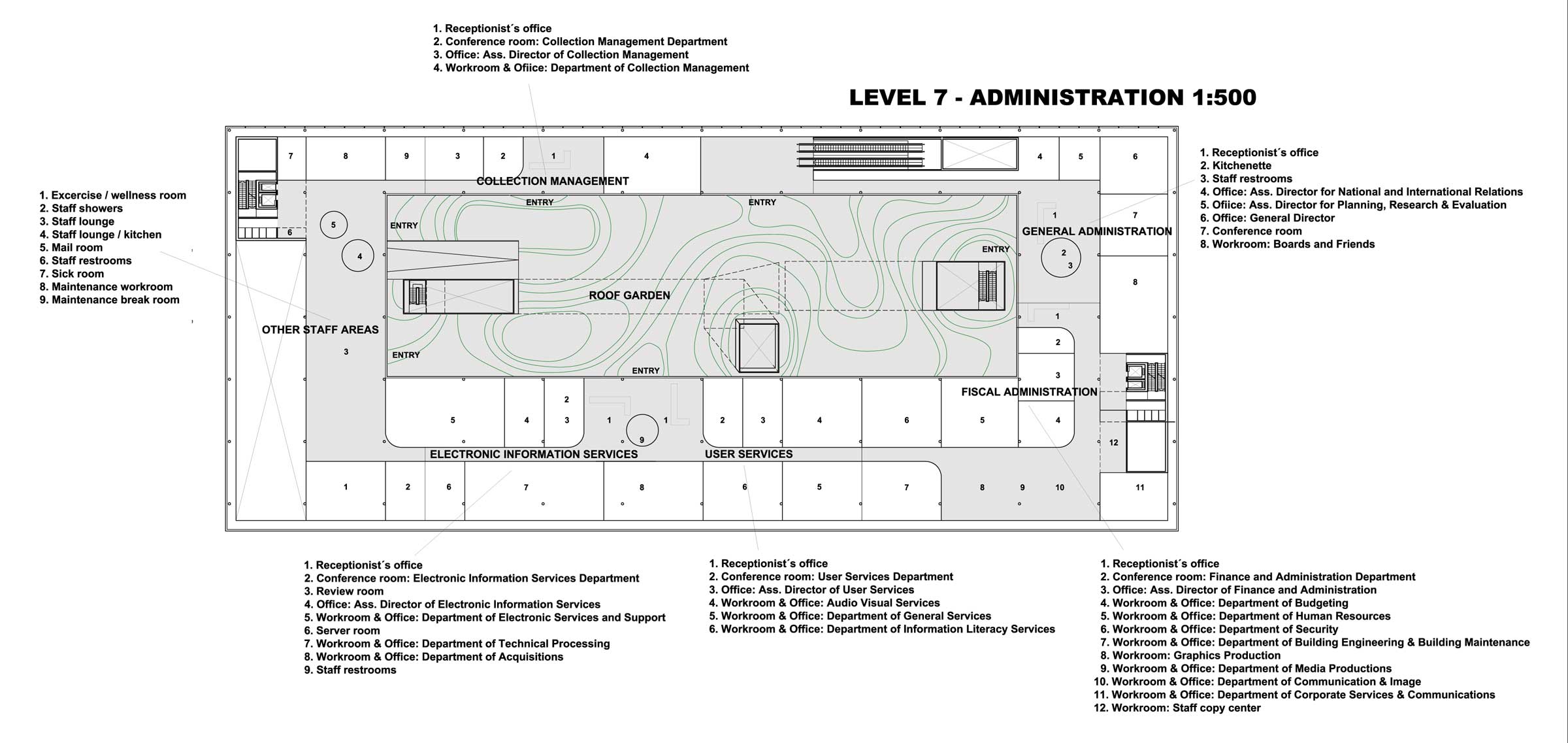
nivel-6
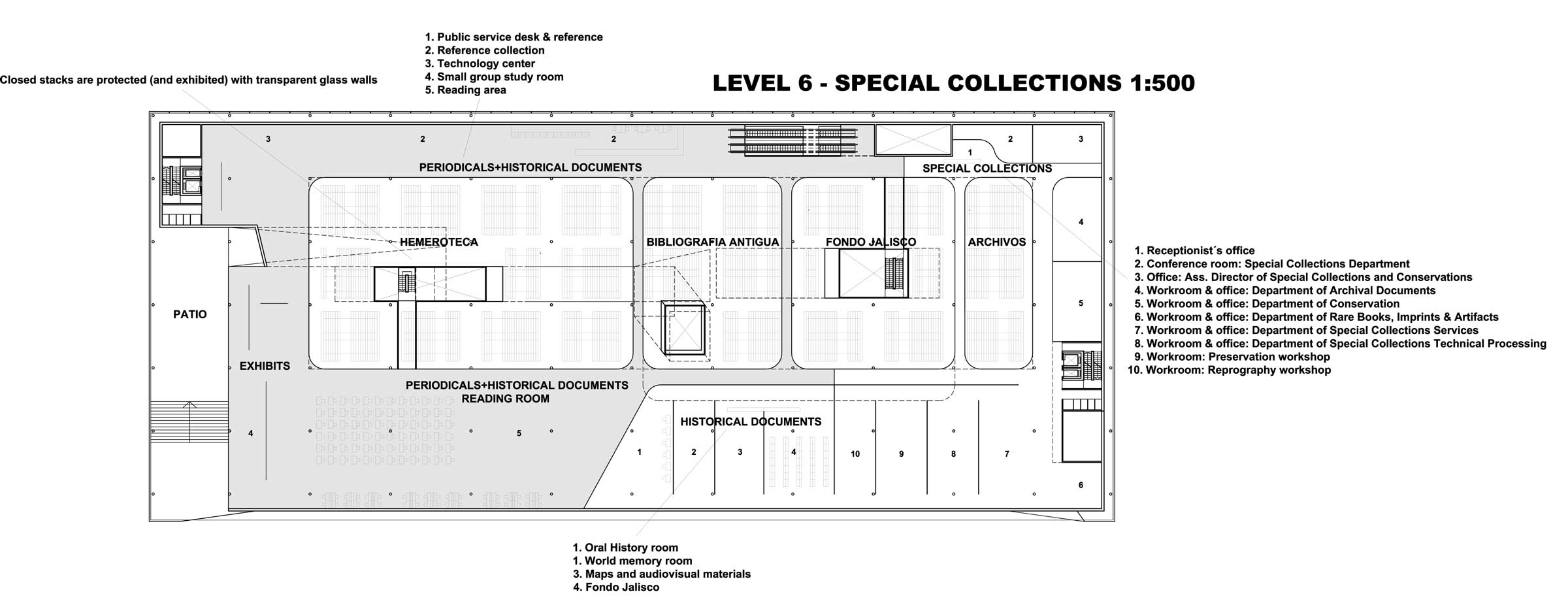
conjunto
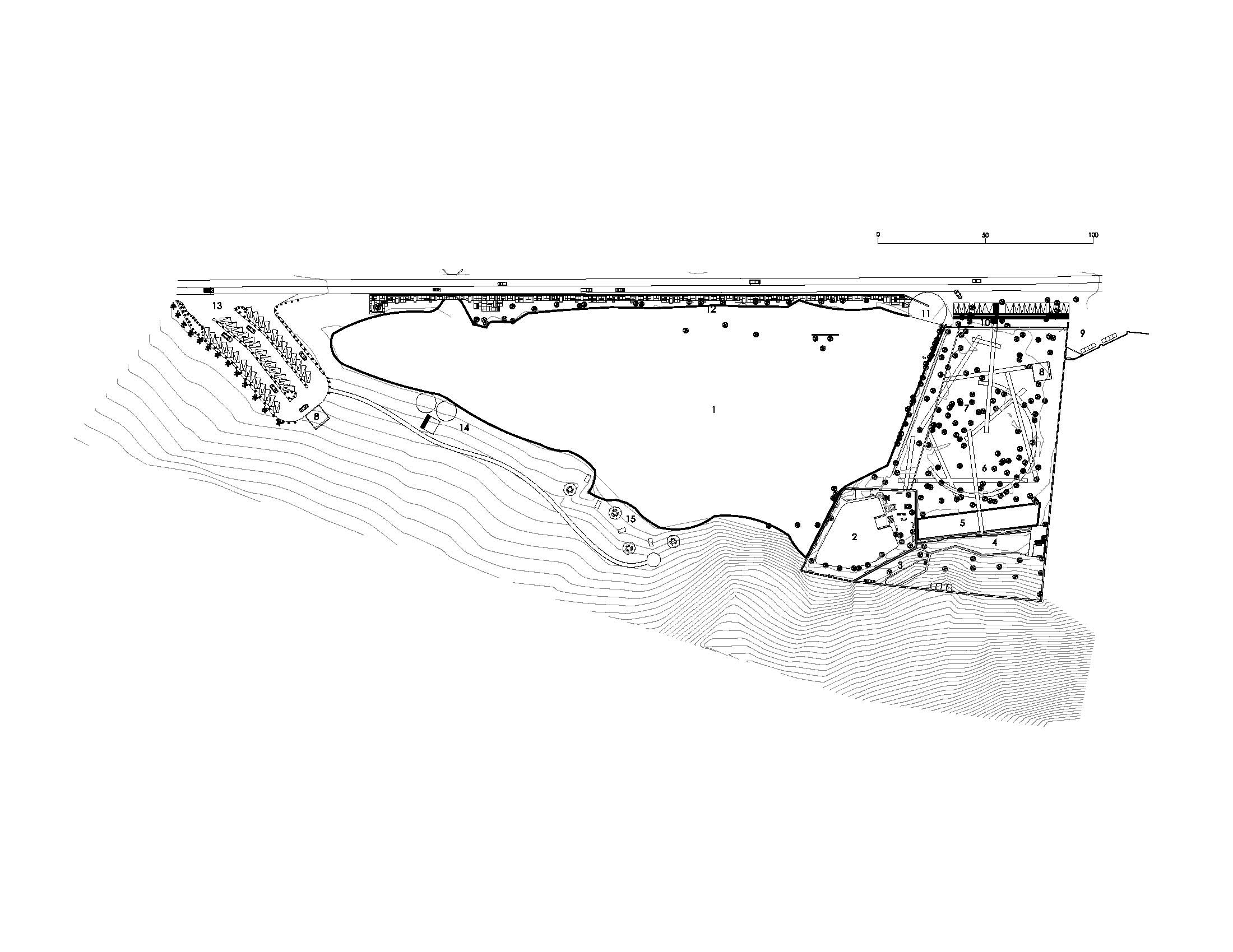
conceptos
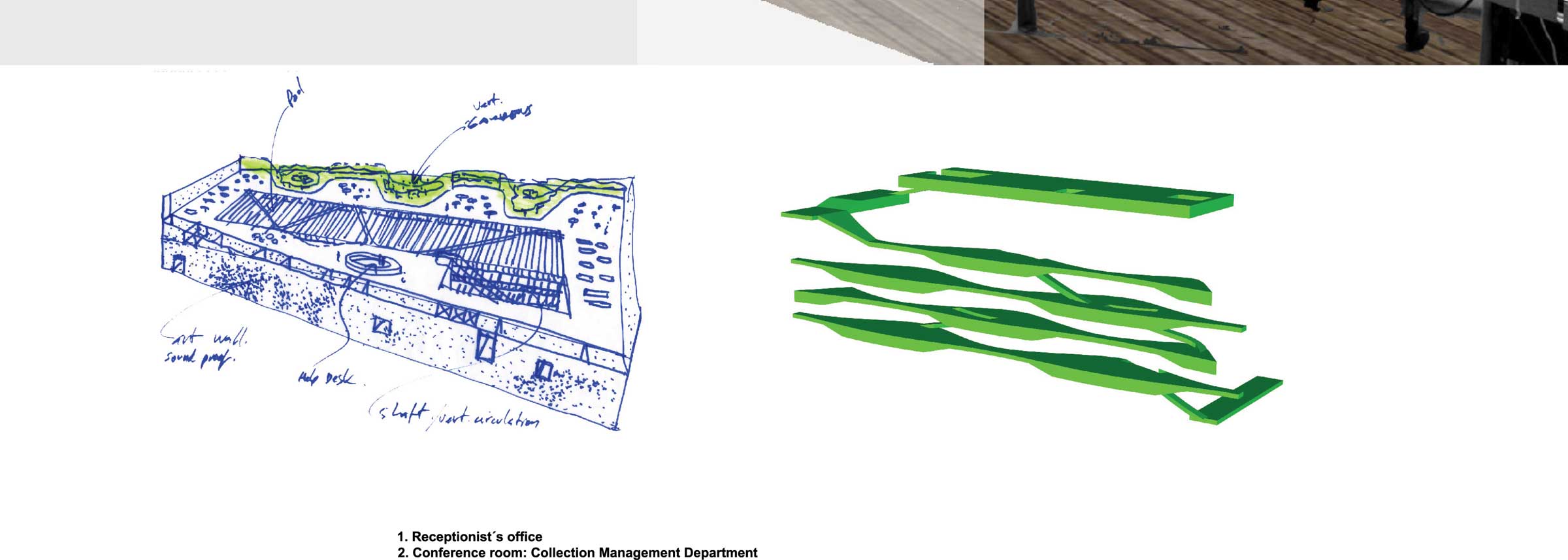
A public library is a building which provides the rare opportunity to create an atmosphere in which the public, the contemporary and the cultural can coexist side by side. It needs to have civic notoriety and to welcome users spontaneously, to give room for play and for learning.
Responding to the petition of the program to accomodate two million books in different levels with uninterrupted view across them, the books are “sunk” inside “pools” contained inside the depth of each slab, which gives as a result totally open spaces.
The building is divided in three main areas: the ground floor, with its height and its welcoming character, a central part where all the collections are contained and a roof garden surrounded by the administrative zone. The building is organized around a core that contains the treasure of the library: five levels with book collections. Reading areas and services surround in each level the tematic pools. This organization gives the user great flexibility, like the fact of being on the outside in a vertical garden, to choose a table near from the pool, or to isolate in one of the conference rooms located along the perimeter. With this disposition it is accomplished as well a thorough control of the collections.
A large opening on the ground floor works as the main access to the library. Upon entering the building, the user can understand its disposition thanks to a diagonal skylight that branches in three directions, connecting the different components of the library. The ground floor is related with the different buildings adjacent to the library: a multiplex, and a children’s museum, and as a result all this axis works as a horizontal connection of culture and learning.
The library establishes a strong relation with the main square of the cultural center. Its facade is a continuation of the green carpet existent in the square. The ondulations of the garden and its changing panes establish a more intricate relation between the inside and the outside.
The remaining facades are cladded in a double skin of glass, which provide sonic and thermal insulation to the building. The space in between functions as a shaft for ventilating the building. The printed glass with hand-writing works as an added luminic protection, and the names of the collections can be seen as well from the outside so the user can get a sense of orientation and go directly to his destination.
New Public Library of Jalisco
Location
Guadalajara, Jalisco
Built area
41,000 m²
Team
Roberto Jiménez Ramos
Ellen Hellsten
Franco Ghilardi

